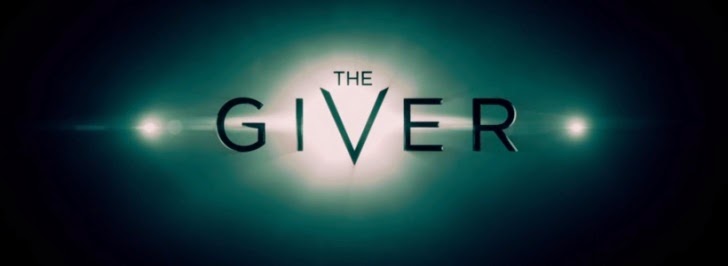The Giver is a very odd movie. It
features a couple of very appealing young actors in Australia’s Brenton
Thwaites as Jonas and Odeya Rush as Fiona; the film’s leads. It has the
presence of Jeff Bridges and Meryl Streep in key supporting roles. It even has
a small role for singer Taylor Swift designed, no doubt, to appeal to the young
adults who buy her music. The film is directed by Phillip Noyce, another
Australian with a wealth of film-making experience dating back to the 1970s,
who has directed some great action thriller movies. It’s based on the
controversial but very successful book of the same name, written by author Lois
Lowry. Yet, The Giver lacks focus and feels too much like a series of scenes
tied together by quick-cuts of home movies that serve to fill the space in
places where it should be creating its own dramatic moments but, instead,
relies on stock footage to convey the emotion it wants it characters and its
audience to feel.
The challenge of adapting The
Giver into a movie is highlighted in the visualisation of the drab,
emotionless, colourless, homogenous society in which the bulk of the story
takes place. As with many young adult science fiction stories, this one is set
in a dystopian future where some kind of “climate event” has forced the
creation of a large-scale secured community, where individuality is not
allowed, the inhabitants are drugged and the government of “elders” rule by way
of pseudo-martial law. The setting is a variation on the 1976 Logan’s Run movie
and it would not be surprising if the owners of the Logan’s Run copyright took
legal action if ever they see The Giver, the similarities are so pronounced. One
of the opening scenes comes so close to plagiarising the opening Carousel sequence
from Logan’s Run that it’s concerning that somebody else’s intellectual
property could be so easily infringed without consequence.
The tedium of the film is
reflected in the tedium of the various cultural ceremonies that are depicted,
including one where the “children” – Jonas, Fiona and their friend Asher played
by Cameron Monaghan – become “adults” when they are allocated their
responsibility within the community. Fiona is nominated as a care-giver for the
young, while Asher, in a way too on-the-nose set-up of “he’s the bad guy”, is
selected to become a drone pilot. (It’s a pretty ham-fisted piece of analogy
that criticises America’s use of the type of technology in the real world.)
Jonas, however, misses out and is left standing on his own after his other 149
classmates have all received their job allocations. Meryl Streep, sleep-walking
her way through the role of Chief Elder, announces that Jonas will become the
Receiver; the most important role in the community. Watching on is Jeff Bridges
as the current Receiver, who will instruct Jonas and transfer the knowledge of
the outside world and past history to him.
It’s all very cliché and
by-the-numbers film making. Moments where obvious tension should exist, there’s
none. Scenes where the viewer should care whether or not Jonas will succeed in
becoming the next Receiver fall flat and fizzle to nothing. Perhaps the bland
setting of the film itself somehow infected the production with an inertia that
made it difficult for any of them to energise their performances to a point
that makes the film’s 100 minute running time of any real interest to the
viewer. Jeff Bridges gives yet another gruff performance that has become his
stock and trade in recent years and, in this role, has a serious case of the
‘Marlon Brando Mumbles’. To make matters worse, screenwriters Michael Mitnick
and Robert Weide introduce a sub-plot for Bridge’s character that is so poorly
executed that it only serves to confuse the already-struggling narrative drive
of the film. The manner in which the film has been edited together leaves a
very definite suspicion that important story material was left out; much of
which was exposition to help the audience understand how Thwaites and Bridges’
characters are able to communicate the way they do and to provide a more
detailed account of the meaning behind the film’s ending.
The Giver also commits the
movie-making crime of not providing the audience with a clear-cut resolution to
the story it’s trying to tell. Admittedly, this is a carry-over from Lois
Lowry’s novel and if Christopher Nolan had made The Giver perhaps the ambiguity
of the ending may have been more meaningful because of what had preceded it.
Phillip Noyce is no Christopher Nolan and The Giver is not Inception. Those
familiar with Lowry’s other books already know the fate of Jonas, but the way
in which the film presents its ending feels like a cheat because it leaves the
impression that The Giver’s producers are trying to create a franchise for
future adventures. The problem with this approach is that it takes the audience
who have paid good money to see a self-contained movie with a self-contained
story for granted. More and more movie makers are trying to achieve “franchise”
success with their movies but it creates schizophrenic story-telling because
the plot gets hi-jacked by story points that are not related to the film’s
narrative. The Giver is an example of this, although not quite on the same
scale as The Amazing Spiderman 2.
The Giver is an underwhelming
addition to the growing sub-genre of young adult dystopian science fiction and,
unfortunately, has been released at a time when more superior versions of this
type of film have either just been released or will soon be released -The Maze
Runner and The Hunger Games: Mockingjay Part One.









